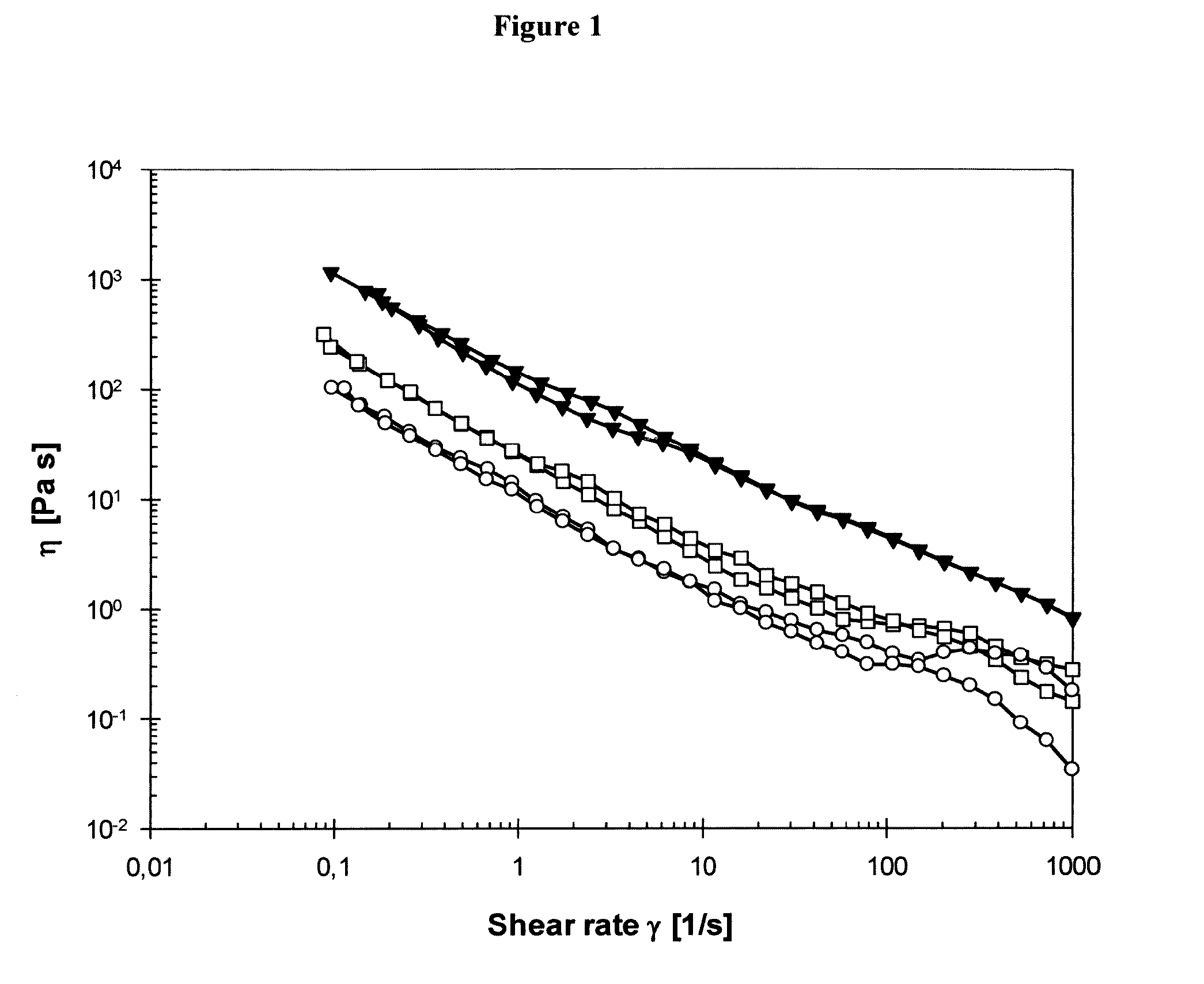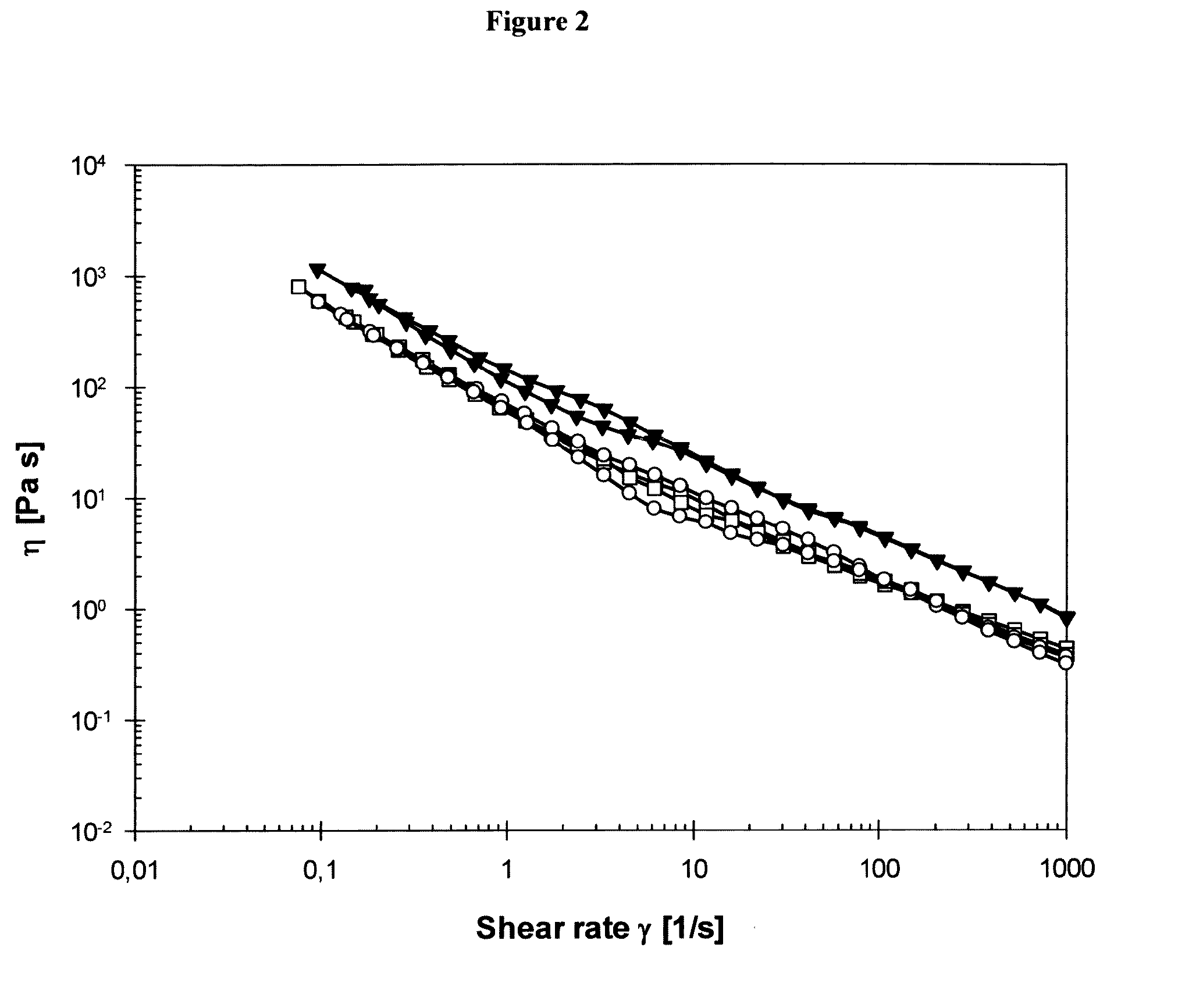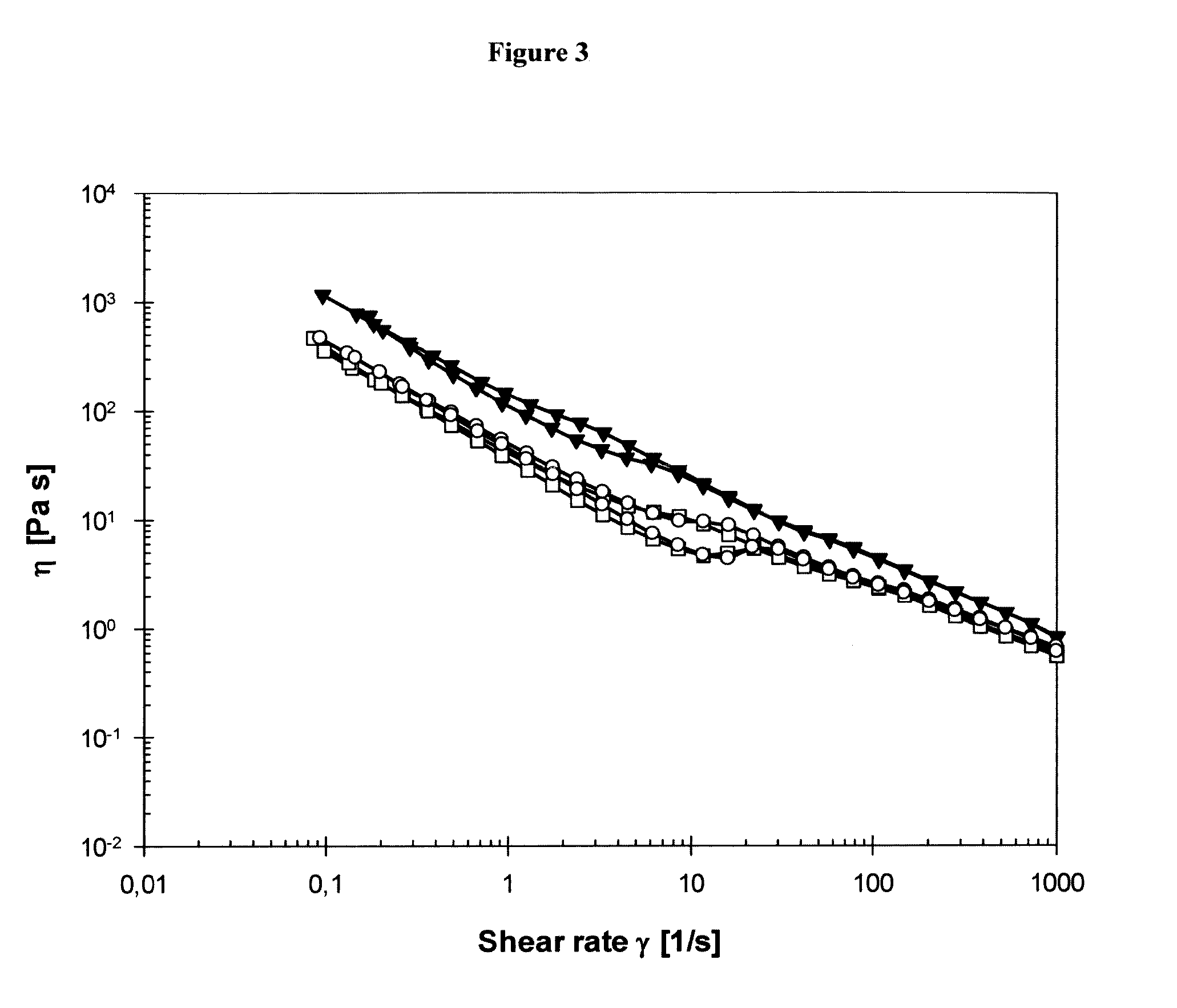Coating composition of NANO cellulose, its uses and a method for its manufacture
- Summary
- Abstract
- Description
- Claims
- Application Information
AI Technical Summary
Benefits of technology
Problems solved by technology
Method used
Image
Examples
example 1a
n of Microfibrillated Cellulose (Nano Cellulose)
[0103]The cellulose selected for the production of microfibrillated cellulose was bleached long fibre sulphate Kraft pulp from Sodra (totally chlorine free fully bleached sulphate pulp mainly based on spruce). The Kraft pulp was mechanically treated in a Claflin conical refiner using 2,000 kWhit specific energy consumption combined with homogenization. The homogenization was done using a high-pressure homogenizer (model 12.56 VH, APV, Rannie LAB) at 0.5-1% consistency using 5 passes and a pressure of 1,000 bar [8].
example 1b preparation
of Microfibrillated Cellulose (Nano Cellulose)
[0104]The cellulose selected for the production of microfibrillated cellulose was bleached long fibre sulphate Kraft pulp from Sodra (totally chlorine free fully bleached sulphate pulp mainly based on spruce) .The Kraft pulp was mechanically treated in a Claflin conical refiner using 2,000 kWh / t specific energy consumption combined with homogenization. The homogenization was done using a high-pressure homogenizer (model 12.56 VH, APV, Rannie LAB) at 0.5-1% consistency using 5 passes and a pressure of 1,000 bar [8]
[0105]From the 0.5-1.0% water dispersion of nano cellulose produced by the homogenization process, the nano cellulose concentrations (1 to 4%) were obtained by either centrifugation or evaporation. Centrifugation was performed in a Heraeus 400R (Thermo Fisher Scientific Inc., Waltham, Mass., USA) at 2500 rpm during 60 minutes at 22° C. This treatment was repeated until a desired concentration of e.g. 1-4% was obtained.
example 2
on and Tests of Compositions According to the Invention
[0106]
TABLE 1Surfactants selected for testCodeDescriptionCTABHexadecyltrimethylammonium bromideOCTABOctadecyltrimethylammonium bromideHPYCLHexadecylpyridinium chlorideTTABTetradecyltrimethylammonium bromideTECTriethyl citrateDPCDodecylpyridinium chloride
[0107]The water dispersion of nano cellulose of 1-4% (example 1b) were added cationic surfactants according to table 2, in accordance with principles known to the person skilled in the art. After surfactant addition, compositions were stirred for 10 minutes and composition pH adjusted to neutral pH (pH 6-7) by addition of HCl and / or NaOH. Compositions were evaporated at 75° C. in a stove to various dry matter content (2.24 to 5.55%.) A summary of samples prepared and tested for their rheology is shown in Table 2.
TABLE 2Summarizing table of tests made on the different solutionsConcentration ofsurfactant (w / wDry matterCode foron nano celluloseNano cellulosesurfactantdry matter)(w / w...
PUM
| Property | Measurement | Unit |
|---|---|---|
| Fraction | aaaaa | aaaaa |
| Fraction | aaaaa | aaaaa |
| Fraction | aaaaa | aaaaa |
Abstract
Description
Claims
Application Information
 Login to View More
Login to View More - R&D
- Intellectual Property
- Life Sciences
- Materials
- Tech Scout
- Unparalleled Data Quality
- Higher Quality Content
- 60% Fewer Hallucinations
Browse by: Latest US Patents, China's latest patents, Technical Efficacy Thesaurus, Application Domain, Technology Topic, Popular Technical Reports.
© 2025 PatSnap. All rights reserved.Legal|Privacy policy|Modern Slavery Act Transparency Statement|Sitemap|About US| Contact US: help@patsnap.com



